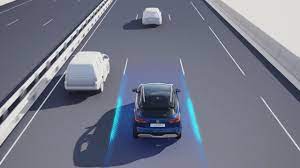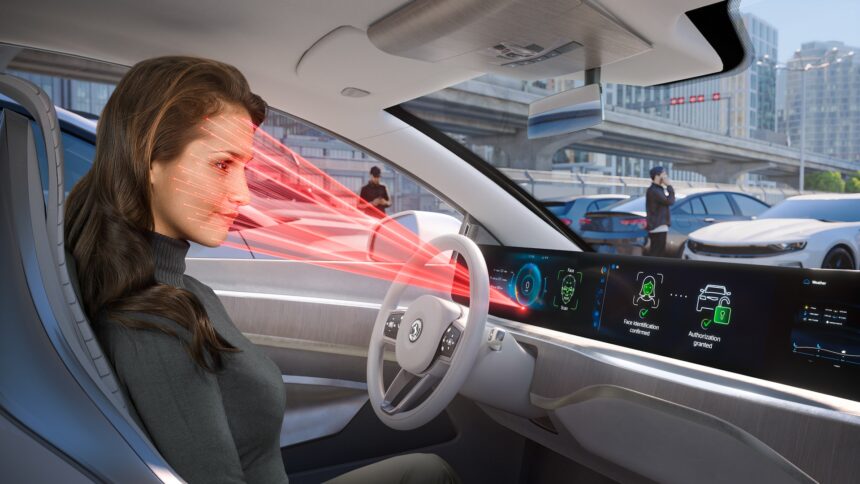In the past, cars were purely mechanical machines, with their performance and capabilities mostly driven by the engine, suspension, and transmission systems. However, as technology has rapidly advanced, cars have evolved into high-tech mobile computers on wheels. The rise of software, electronics, and advanced systems has completely transformed the way we think about driving and the automotive industry as a whole.
One of the key drivers of this transformation is the introduction of advanced driver-assistance systems (ADAS). These systems have revolutionized vehicle safety and functionality, enabling a new era of automated features that are already becoming a norm in modern vehicles. From lane-keeping assist to automated parking, ADAS has redefined how cars interact with their environment and drivers.
As cars become more reliant on software and technology, manufacturers are continually pushing the boundaries to make driving safer, more efficient, and even enjoyable. In this post, we’ll explore how software innovations, particularly ADAS, are reshaping the automotive industry.
The Role of Software in Modern Cars
Modern cars are no longer just mechanical wonders; they are sophisticated computers that require highly specialized software to run. From the infotainment system to engine management, software now plays a central role in vehicle performance. These advancements are driven by the integration of increasingly powerful microchips, sensors, and data management systems.
The software inside a car controls everything from basic operations like starting the engine to more advanced tasks like adjusting the climate control, monitoring tire pressure, or calculating optimal fuel efficiency. A seamless integration of software allows manufacturers to create features that make driving more comfortable, safer, and enjoyable.
One of the key areas of software development is the creation of advanced driver-assistance systems (ADAS), which use a combination of sensors, cameras, and radar to help drivers with tasks such as parking, lane-keeping, collision avoidance, and more.
ADAS: Revolutionizing Vehicle Safety
Advanced driver-assistance systems (ADAS) are not just a futuristic concept—they’re already a reality in many modern vehicles. These systems use technology to assist drivers in preventing accidents, making driving safer for everyone on the road.
At the core of ADAS are sensors and cameras strategically placed around the car, feeding real-time data to the onboard computer system. This data is processed to identify potential risks or obstacles and alert the driver or activate the necessary safety features. The systems are designed to work in tandem with the driver, offering real-time assistance to prevent collisions, reduce the chances of human error, and help drivers navigate challenging situations.
Some popular examples of ADAS include lane departure warning (LDW), lane-keeping assist (LKA), adaptive cruise control (ACC), and automatic emergency braking (AEB). These systems work seamlessly in the background, making driving safer by providing timely interventions in high-risk scenarios.
The Evolution of Autonomous Driving Technologies
While advanced driver-assistance systems (ADAS) are enhancing driving safety, the development of autonomous driving technologies is pushing the envelope even further. These systems are designed to take over some or all driving tasks from the human driver, with the ultimate goal being fully autonomous vehicles (Level 5).
The transition toward autonomous vehicles will rely heavily on innovations in software, including artificial intelligence (AI), machine learning, and high-precision mapping. Advanced sensors, such as LiDAR, radar, and cameras, will work together with AI algorithms to interpret the driving environment and make decisions in real time.
Though fully autonomous vehicles are not yet widely available, many automakers are already offering semi-autonomous driving features (Level 2 and Level 3), which use advanced driver-assistance systems (ADAS) to automate certain driving tasks, such as steering, acceleration, and braking.
How ADAS Enhances the Driving Experience

Beyond safety, advanced driver-assistance systems (ADAS) also enhance the driving experience by reducing stress, improving convenience, and increasing overall efficiency. With features such as adaptive cruise control, cars can maintain a safe distance from other vehicles on the highway, reducing the need for constant speed adjustments. Lane-keeping assist can help drivers stay centered in their lane, while park assist can take over parking duties entirely.
These features not only improve comfort and convenience but also contribute to fuel efficiency and reduce wear and tear on the vehicle by optimizing driving patterns. The technology behind these systems ensures smoother driving experiences, making daily commutes more manageable.
The Future of Software in Cars: Connected Vehicles
Looking ahead, the future of software in cars is closely tied to the concept of connected vehicles. Cars are becoming increasingly connected to the internet, other vehicles, and smart infrastructure. With the growth of the Internet of Things (IoT), vehicles can now communicate with each other and with smart traffic systems to improve safety and efficiency.
For example, vehicle-to-everything (V2X) communication allows cars to exchange data with traffic lights, road signs, and even pedestrians to enhance the driving experience. This network can help cars avoid accidents, improve traffic flow, and even provide real-time navigation adjustments based on road conditions.
As the connectivity of vehicles grows, so does the reliance on software to process and analyze the vast amounts of data these systems generate. The use of cloud computing and edge computing will enable vehicles to quickly process data and make instant decisions, paving the way for even more advanced autonomous driving capabilities.
ADAS and the Future of Car Safety Regulations
As advanced driver-assistance systems (ADAS) become more widespread, governments and regulatory bodies are working to create guidelines and policies that govern their use. Many countries are setting specific requirements for safety standards, including the integration of certain ADAS technologies in new vehicles.
For instance, in the European Union, new vehicles are required to have certain ADAS features, such as lane-keeping assist and automatic emergency braking. Similarly, the National Highway Traffic Safety Administration (NHTSA) in the United States is closely monitoring the development of ADAS technologies to ensure they meet safety standards while also encouraging innovation.
As ADAS technology continues to evolve, it is expected that regulations will become even more focused on ensuring that these systems contribute to safer roads and a smoother transition toward fully autonomous driving.
Conclusion: The Road Ahead for Automotive Technology
The integration of software, electronics, and advanced driver-assistance systems (ADAS) into modern cars has fundamentally changed the driving experience. These innovations have led to safer, more efficient, and more enjoyable journeys, with much more on the horizon as autonomous driving technologies continue to develop.
In the near future, we can expect further advancements in ADAS that make cars even smarter and more capable of supporting drivers. As cars continue to evolve into intelligent systems that can communicate with one another and the infrastructure around them, the automotive industry is poised for an exciting transformation.
Whether through improving safety, convenience, or driving autonomy, advanced driver-assistance systems (ADAS) represent just the beginning of what is to come in the world of automotive technology. The future of driving is not just about horsepower and engines; it’s about smarter, safer, and more connected vehicles that are changing how we move through the world.
